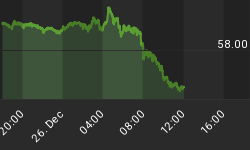Signs Of The Times:
"This is a liquidity driven market.
"Getting rid of M3 makes expansion invisible.
"Bernanke is closely attuned to the market and as to how much liquidity needs to be in the system for the market to be supported."
- Marty Chenard, StockTiming.com, July 20
That was not an isolated voice of confidence, as one usually critical and widely-followed observer on August 18 wrote, "Rather than the End of the World, credit markets will get back to normal, as there is a lot of money that needs to find a home."
Then on August 21 someone at the Wall Street Journal less conditioned by wishful thinking reported, "Debt isn't merely more expensive, it is scarcely available at any price or on any terms."
The latter is reality and it will likely be as severe as when Thomas Gresham was agent and advisor to the British government in Antwerp when it was the financial capital of the world. Elizabeth's royal demands for funds were considered undeniable, but during the crisis of 1561 Gresham was obliged to report that there was no credit available, "even at double collateral."
Being a trader he could accept fate in the market place. There have been many booms and panics since accompanied by generations of academics who all seem to have to do something about the crisis and over the centuries all come up with the same solutions to a credit contraction. Add more credit without understanding that the problem is directly due to the over-use of credit, and cut administered rates without understanding the short-dated market rates of interest plunge during the early stages of a contraction.
As the saying goes, "Nonsense so blatant that only an intellectual would fall for it".
Stock Markets continue to be suspended by convictions about earnings, valuations, the miracles of policymaking and the soundness of the economy. This is the story that has worked since 2003 when the economy began to support the bull market that started in October 2002.
The point to be made is that the stock market leads major turns in the economy so there is little reason to use economic trends or, shudder, projections.
The next point is that changes in credit markets lead turns in the stock market, and central banks typically follow changes in the yield curve.
For some months now we've been trying to place orthodoxy in perspective and recently market forces are adding a practical instruction. A salient event was that the decline in bill yields, in Canada and the US, was not by any means anticipating a "managed" decline in administrative rates. The decline in bill rates is a classic "cash in a crash" rush, which is the next indelible step towards a cyclical credit contraction.
And as these pages repeat, credit is money of the mind and that mind has changed, from using any asset for the application of leverage to a revulsion for credit.
The truly sophisticated series in the play is once again the yield curve. Inversion shows a strong demand by speculators for short-term funds and the transition to steepening indicates a decline in speculative demand and all that that entails.
Of course, with the boom NYSE margin debt soared, exceeding the peak reached in 1Q 2000 by some 35%.
On the big picture, this is nothing. In May the guys at Dominion Bond Rating Service (DBRS) provided a world-wide calculation on different positions and they go as follows:
1% | Cash | |
10% | Securities such as stocks, bonds and money market | |
11% | Structured asset-backed product | |
78% | Derivatives |
This attempts to put some numbers on the most egregious house of cards in history. At the culmination of great manias, typically the reckless exposure is in fringe banks that are going to show traditional banks the "new" way to do business. In the 1772 bubble it was the Ayr Bank, which example was used by Adam Smith in The Wealth of Nations, published in 1776.
As noted in The Unholy Trinity of July 21 (www.institutionaladvisors.com) the corruption of fiduciary responsibility starts at the top with the Fed, which has been run far too long as an instrument of experimental economics. The next two corruptions have been math modeling of pricing and credit rating.
This has enabled the penetration of fringe, or as described in the US during the calamities of 1837 and 1857 as "wildcat", banking further into the realm of traditional banking than at any time in history.
In some religions repentance takes only a moment. In political-economy it takes a lot longer, with salvation much longer than that.
It seems like changes in credit markets will continue to influence the stock market. In looking to the near term, there has been little change in traditional credit spreads over the past week and the BBB subprime bond price has improved from 41.42 last Thursday to 43.21.
This has likely been the foundation of the rally since last Thursday.
The change in the credit markets has hit credit spreads from long to money market desks, and has done a huge number to the curve. The loss of liquidity has yet to hit long treasuries - it will, and it could be the last boot to fall.
Conditions remain hazardous.
[Wall Street is] "a colossal suction pump steadily draining the world of capital."
- Jesse Livermore, June 11, 1929
"If recession should threaten (as is not indicated at present) there is little doubt that the Reserve System would take steps to check [it]."
- Harvard Economic Society, October, 1929
















